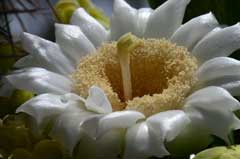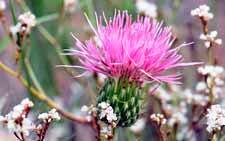Johnstonella angustifolia, Panamint Cryptantha
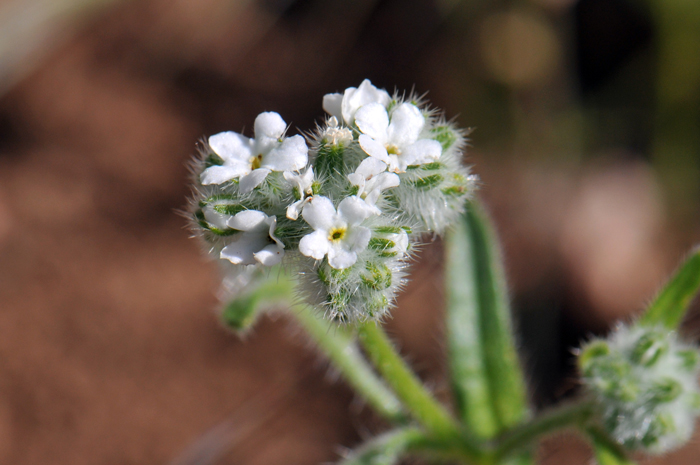
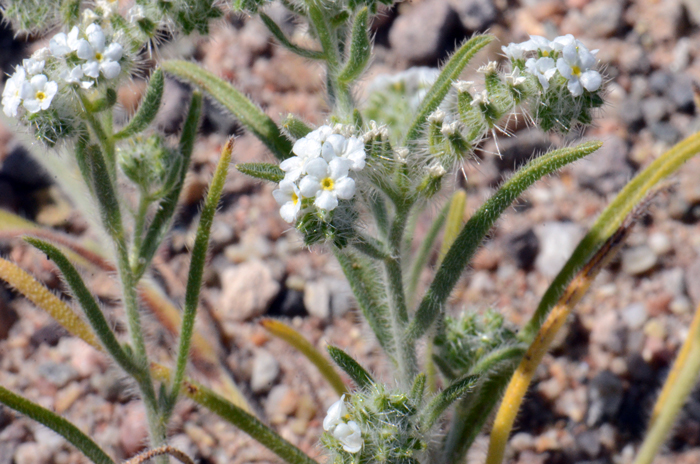
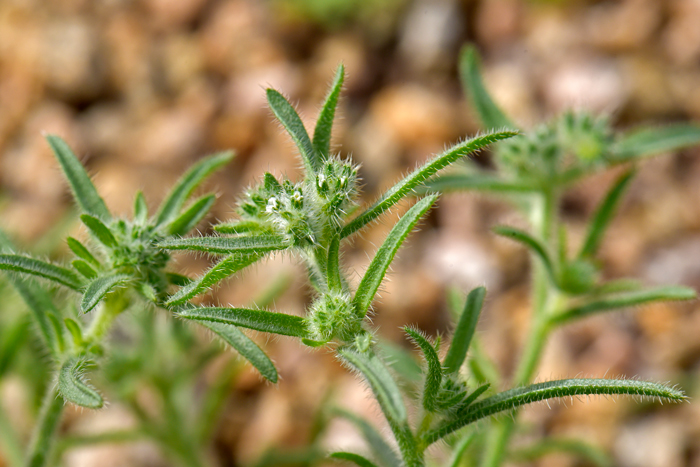
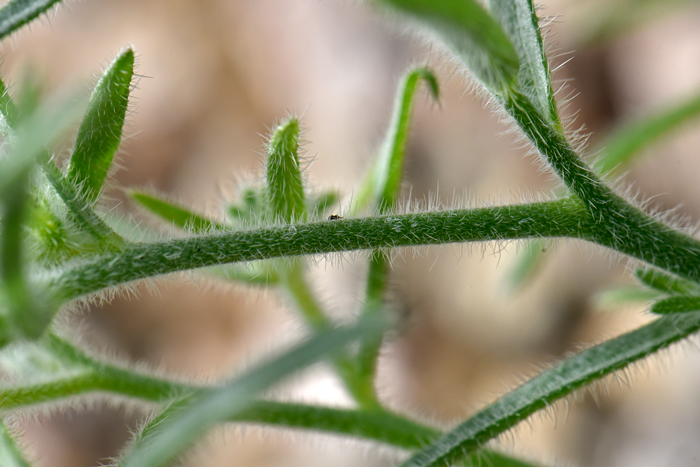
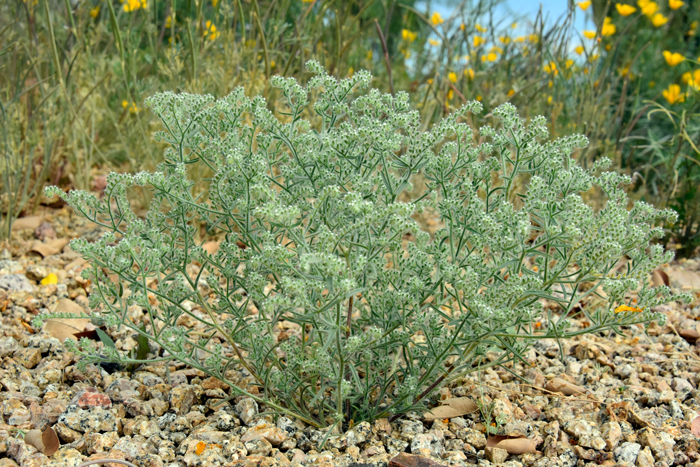
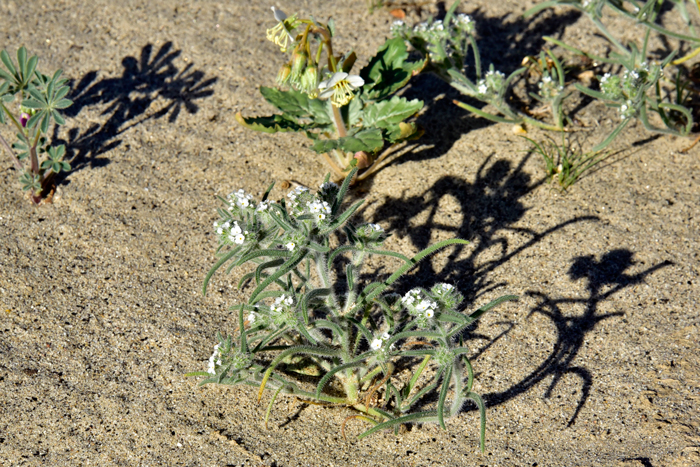
Scientific Name: Johnstonella angustifolia, (=Cryptantha)
Common Name: Panamint Cryptantha
Also Called: Bristlelobe Cryptantha, Forget-Me-Not, Narrowleaf Pick-Me-Not, Nievitas, Panamint Catseye, Panamint Cryptantha, Panamint Narrow-Wing Cat's-Eye; Spanish, Peluda
Family: Boraginaceae, Forget-Me-Not Family
Synonyms: (Cryptantha angustifolia, Eremocarya angustifolia, Eritrichium angustifolium, Johnstonella angustifolia, Johnstonella inaequata, Krynitzkia angustifolia)
Status: Native
Duration: Annual
Size: 2 to 12 inches (5-30 m) tall.
Growth Form: Forb/herb; stems slender, plants much branched at base and above, plants spreading horizontally, then becoming up-right (ascending) or plants growing horizontally but turned or curving up (decumbent); foliage with stiff, straight, closely appressed hairs (strigose), (bristly), coarse hairs spreading; roots rarely red-purple.
Leaves: Green; blades from .4 to 1.5 inches (1-4 cm) arranged alternately along the slender stems, leaves (sessile); leaves rough-hairy; clustered at the base and scattered along the stems; the hairs on the leaves and stems have a bulbous-type attachment at the base.
Flower Color: White; corolla gradually widens outward from the base and shaped like a funnel (funnelform), the corolla has yellow appendages the calyx lobes are lance-linear, hispid with stiff spreading hairs; fruit a nutlet, 4 with 1 nutlet larger than the others.
Flowering Season: February to June; January to June in California, March to May in Texas
Elevation: Below 5,200 feet (1,600 m)
Habitat Preferences: Sandy, occasionally silty to gravelly soils, Creosote desert communities, desert woodlands.
Recorded Range: Panamint Cryptantha is found in the southwestern United States in AZ, CA, NM, NV, TX and UT. The species has its greatest distribution in AZ, CA and NV. Cryptantha species have their greatest representations in CA and NV eastward toward AZ and NM.
North America & US County Distribution Map for Cryptantha angustifolia (=Cryptantha angustifolia.
U.S. Weed Information: No information available.
Invasive/Noxious Weed Information: No information available.
Wetland Indicator: No information available.
Threatened/Endangered Information: No information available.
In the Southwestern United States: Arizona has 37 species of genus, California has 60 species, Nevada has 44 species, New Mexico has 23 species, Texas has 15 species, Utah has 55 species. All data approximate and subject to revision.
The genus Cryptantha was published by Johann Georg Christian Lehmann in 1837.
The recent genus Johnstonella was named in honor of Ivan Murray Johnston (1898-1960), one of the leading American systematic botanists of the early 20th century and world-wide authority of the Boraginaceae family. The genus Johnstonella which is a former or current genus name that may be resurrected in the future was published by August Brand in 1925.
In the Southwestern United States: Arizona has 37 species of Cryptantha, California has 60 species, Nevada has 45 species, New Mexico has 24 species, Texas has 15 species, Utah has 56 species. All data approximate and subject to revision.
Comments: Several Cryptantha species, including C. angustifolia, are common and among the earliest spring bloomers. In early spring it is common for this species to be observed with large populations of other Boraginaceae species including other Cryptantha species, Curvenut Combseed, Pectocarya recurvata, Common Fiddleneck, Amsinckia menziesii and Palmer's Grapplinghook, Harpagonella palmeri.Members of the genus Cryptantha are collectively referred to as Cat’s Eyes or Popcorn Flowers.
As published in the journal Phytotaxa, 2019, the genus Johnstonella was expanded to 13 species and 15 minimum-rank taxa, these formerly classified in Cryptantha that included four additional Cryptantha species; C. albida, C. mexicana, C. texana and C. hispida.
In Southwest Desert Flora also see Bearded Cryptantha, Cryptantha barbigera, Gander's Cryptantha, Cryptantha ganderi, Narrowstem Cryptantha, Cryptantha gracilis, Redroot Cryptantha, Cryptantha micrantha, Torrey's Cryptantha, Cryptantha torreyana, and Wingnut Cryptantha, Cryptantha pterocarya.
The recent genus Johnstonella was named in honor of Ivan Murray Johnston (1898-1960), one of the leading American systematic botanists of the early 20th century and world-wide authority of the Boraginaceae family. The genus Johnstonella which is a former or current genus name that may be resurrected in the future was published by August Brand in 1925.
The species epithet "angustifolia" (angustifo'lia/angustifo'lium:) means having narrow foliage.
